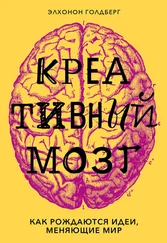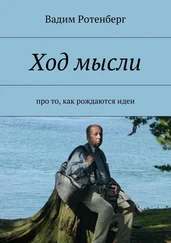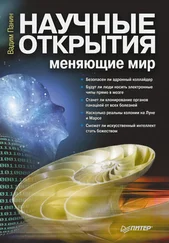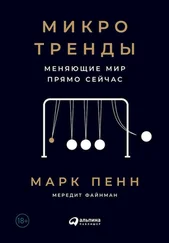20. K. Kantarci, C. R. Jack, Y. C. Xu, N. G. Campeau, P. C. O’Brien, G. E. Smith, R. J. Ivnik, B. F. Boeve, E. Kokmen, E. G. Tangalos, and R. C. Petersen, «Regional Metabolic Patterns in Mild Cognitive Impairment and Alzheimer’s: A 1H MRS Study», Neurology 55 (2000): 210–217; S. H. Patel, M. Inglese, G. Glosser, D. L. Kolson, R. I. Grossman, and O. Gonen, «Whole-Brain N-acetylaspartate Level and Cognitive Performance in HIV Infection», AJNR: American Journal of Neuroradiology 24 (2003): 1587–1591.
21. K. Nordengen, C. Heuser, J. E. Rinholm, R. Matalon, and V. Gundersen, «Localisation of N-acetylaspartate in Oligodendrocytes/ Myelin», Brain Structure and Function 220 (2015): 899–917.
22. A. L. Alexander, J. E. Lee, M. Lazar, and A. S. Field, «Diffusion Tensor Imaging of the Brain», Neurotherapeutics 4 (2007): 316–329.
23. R. Westerhausen, C. Walter, F. Kreuder, R. A. Wittling, E. Schweiger, and W. Wittling, «The Influence of Handedness and Gender on the Microstructure of the Human Corpus Callosum: A Diffusion-Tensor Magnetic Resonance Imaging Study», Neuroscience Letters 351 (2003): 99—102; R. Westerhausen, F. Kreuder, S. Dos Santos Sequeira, C. Walter, W. Woerner, R. A. Wittling, E. Schweiger, and W. Wittling, «Effects of Handedness and Gender on Macro-and Microstructure of the Corpus Callosum and Its Subregions: A Combined High-Resolution and Diffusion-Tensor MRI Study», Cognitive Brain Research 21 (2004): 418–426.
24. H. Takeuchi, Y. Taki, Y. Sassa, H. Hashizume, A. Sekiguchi, A. Fukushima, and R. Kawashima, «White Matter Structures Associated with Creativity: Evidence from Diffusion Tensor Imaging», Neuroimage 51 (2010): 11–18.
25. D. W. Moore, R. A. Bhadelia, R. L. Billings, C. Fulwiler, K. M. Heilman, K. M. J. Rood, and D. A. Gansler, «Hemispheric Connectivity and the Visual – Spatial Divergent-Thinking Component of Creativity», Brain and Cognition 70 (2009): 267–272.
26. E. P. Torrance, Torrance Tests of Creative Thinking (Bensenville, IL: Scholastic Testing Service, 1966).
27. D. A. Gansler, D. W. Moore, T. M. Susmaras, M. W. Jerram, J. Sousa, and K. M. Heilman, «Cortical Morphology of Visual Creativity», Neuropsychologia 49 (2011): 2527–2532.
28. R. P. Chi and A. W. Snyder, «Facilitate Insight by Non-invasive Brain Stimulation», PLoS One 6 (2011): E16655; R. P. Chi and A. W. Snyder, «Brain Stimulation Enables the Solution of an Inherently Difficult Problem», Neuroscience Letters 515 (2012): 121–124.
29. J. Travers, The Puzzle-Mine: Puzzles Collected from the Works of the Late Henry Ernest Dudeney (Nashville, TN: Thomas Nelson, 1951).
30. M. Ollinger, G. Jones, and G. Knoblich, «Investigating the Effect of Mental Set on Insight Problem Solving», Experimental Psychology 55 (2008): 269–282.
31. R. E. Jung, R. Grazioplene, A. Caprihan, R. S. Chavez, and R. J. Haier, «White Matter Integrity, Creativity, and Psychopathology: Disentangling Constructs with Diffusion Tensor Imaging», PLoS One 5 (2010): E9818.
32. T. Kawashima, M. Nakamura, S. Bouix, M. Kubicki, D. F. Salisbury, C. F. Westin, R. W. McCarley, and M. E. Shenton, «Uncinate Fasciculus Abnormalities in Recent Onset Schizophrenia and Affective Psychosis: A Diffusion Tensor Imaging Study», Schizophrenia Research 110 (2009): 119–126.
33. S. Rodrigo, O. Naggara, C. Oppenheim, N. Golestani, C. Poupon, Y. Cointepas, J. F. Mangin, D. Le Bihan, and J. F. Meder, «Human Subinsular Asymmetry Studied by Diffusion Tensor Imaging and Fiber Tracking», American Journal of Neuroradiology 28 (2007): 1526–1531; H. J. Park, C. F. Westin, M. Kubicki, S. E. Maier, M. Niznikiewicz, A. Baer, M. Frumin, R. Kikinis, F. A. Jolesz, R. W. McCarley, and M. E. Shenton, «White Matter Hemisphere Asymmetries in Healthy Subjects and in Schizophrenia: A Diffusion Tensor MRI Study», NeuroImage 23 (2004): 213–223.
34. D. C. Van Essen, S. M. Smith, D. M. Barch, T. E. J. Behrens, E. Yacoub, K. Ugurbil, and for the WU-Minn HCP Consortium, «The WU-Minn Human Connectome Project: An Overview», Neuroimage 80 (2013): 62–79.
35. F. Galton, Hereditary Genius (London: Macmillan, 1869).
36. R. P. Ebstein, O. Novick, R. Umansky, B. Priel, Y. Osher, D. Blaine, E. R. Bennett, L. Nemanov, M. Katz, and R. H. Belmaker, «Dopamine D4 Receptor (D4DR) Exon III Polymorphism Associated with the Human Personality Trait of Novelty Seeking», Nature Genetics 12 (1996): 78–80; J. Benjamin, L. Li, C. Patterson, B. D. Greenberg, D. L. Murphy, and D. H. Hamer, «Population and Familial Association Between the D4 Dopamine Receptor Gene and Measures of Novelty Seeking», Nature Genetics 12 (1996): 81–84.
37. M. R. Munafò, B. Yalcin, S. A. Willis-Owen, and J. Flint, «Association of the Dopamine D4 Receptor (DRD4) Gene and Approach-Related Personality Traits: Meta-Analysis and New Data», Biological Psychiatry 63 (2008): 197–206.
38. M. Reuter, S. Roth, K. Holve, and J. Hennig, «Identification of First Candidate Genes for Creativity: A Pilot Study», Brain Research 1069 (2006): 190–197.
39. O. Manzano, S. Cervenka, A. Karabanov, L. Farde, and F. Ullen, «Thinking Outside a Less Intact Box: Thalamic Dopamine D2 Receptor Densities Are Negatively Related to Psychometric Creativity in Healthy Individuals», PLoS One 17 (2010).
40. E. Theusch, A. Basu, and J. Gitschier, «Genome-wide Study of Families with Absolute Pitch Reveals Linkage to 8q24.21 and Locus Heterogeneity», American Journal of Human Genetics 85 (1) (2009): 112–119.
41. J. Oikkonen, T. Kuusi, P. Peltonen, P. Raijas, L. Ukkola-Vuoti, K. Karma, P. Onkamo, and I. Järvelä, «Creative Activities in Music— A Genome-Wide Linkage Analysis», PLoS One 24 (2016): 11 (2).
42. R. Bachner-Melman, C. Dina, A. Zohar, N. Constantini, E. Lerer, S. Hoch, S. Sella, L. Nemanov, I. Gritsenko, P. Lichtenberg, R. Granot, and R. Ebstein, «AVPR1A and SLC6A4 Gene Polymorphisms Are Associated with Creative Dance Performance», PLoS Genetics 1 (3) (2005): E42.
43. D. J. Miller, T. Duka, C. D. Stimpson, S. J. Schapiro, W. B. Baze, M. J. McArthur, A. J. Fobbs, A. M. M. Sousa, N. Sestand, D. E. Wildman, L. Lipovich, C. W. Kuzawa, P. R. Hof, and C. C. Sherwood, «Prolonged Myelination in Human Neocortical Evolution», Proceedings of the National Academy of Sciences 109 (2012): 116480—16485.
44. T. Sun, R. V. Collura, M. Ruvolo, and C. A. Walsh, «Genomic and Evolutionary Analyses of Asymmetrically Expressed Genes in Human Fetal Left and Right Cerebral Cortex», Cerebral Cortex 16 (2006): I18— i25; T. Sun, C. Patoine, A. Abu-Khalil, J. Visvader, E. Sum, T. J. Cherry, S. H. Orkin, D. H. Geschwind, and C. A. Walsh, «Early Asymmetry of Gene Transcription Between Embryonic Human Left and Right Cerebral Cortex», Science 308 (2005): 1794–1798; T. Sun and C. A. Walsh, «Molecular Approaches to Brain Asymmetry and Handedness», Nature Reviews Neuroscience 7 (2006): 655–662.
45. G. Davies, A. Tenesa, A. Payton, J. Yang, S. E. Harris, D. Liewald, X. Ke, S. Le Hellard, A. Christoforou, M. Luciano, K. McGhee, L. Lopez, A. J. Gow, J. Corley, P. Redmond, H. C. Fox, P. Haggarty, L. J. Whalley, G. McNeill, M. E. Goddard, T. Espeseth, A. J. Lundervold, Ivar Reinvang, A. Pickles, V. M. Steen, W. Ollier, D. J. Porteous, M. Horan, J. M. Starr, N. Pendleton, P. M. Visscher, and I. J. Deary, «Genome-wide Association Studies Establish That Human Intelligence Is Highly Heritable and Polygenic», Molecular Psychiatry 16 (2011): 996—1005.
Глава 11. Эпилог: Что дальше?
1. E. Kandel, The Age of Insight: The Quest to Understand the Unconscious in Art, Mind, and Brain, from Vienna 1900 to the Present (New York: Random House, 2012).
2. C. L. Satizabal, A. S. Beiser, V. Chouraki, G. Chêne, C. Dufouil, and S. Seshadri, «Incidence of Dementia over Three Decades in the Framingham Heart Study», New England Journal of Medicine 374 (2016): 523–532.
Читать дальше
![Элхонон Голдберг Креативный мозг [Как рождаются идеи, меняющие мир] [litres] обложка книги](/books/395572/elhonon-goldberg-kreativnyj-mozg-kak-rozhdayutsya-id-cover.webp)
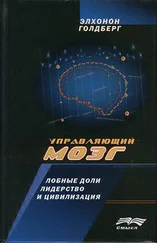
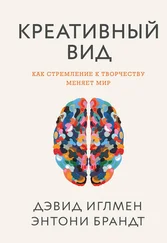


![Наталья Царенко - Джентльменами не рождаются, или Секреты воспитания мальчиков [litres]](/books/396504/natalya-carenko-dzhentlmenami-ne-rozhdayutsya-ili-se-thumb.webp)


